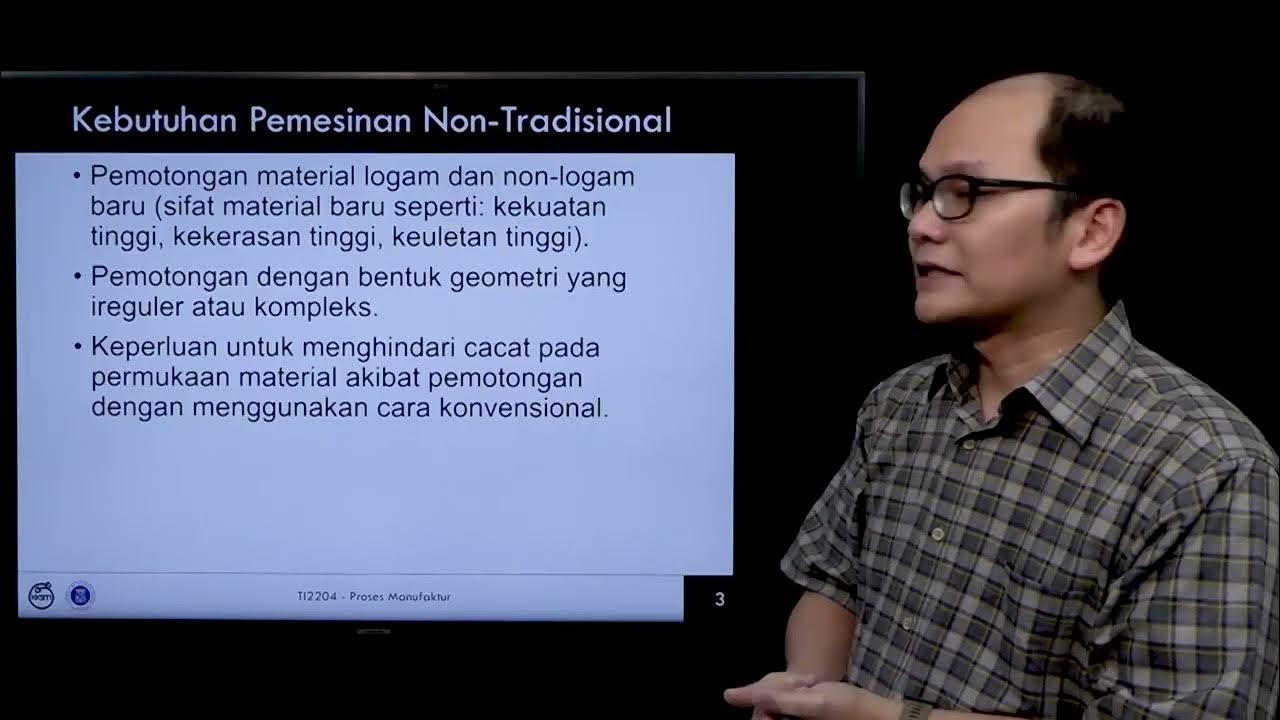Uji Keras Metode Rockwell, Brinell, dan Vickers
Summary
TLDRThis presentation provides an overview of hardness testing methods used in manufacturing, focusing on Rockwell, Brinell, and Vickers techniques. The speaker explains the significance of hardness in determining material resistance to deformation and the practical steps involved in each testing method. Key equipment, such as a universal hardness testing machine, is introduced, alongside detailed procedures for specimen preparation and measurement. The process emphasizes the importance of precision in testing and the differences between methods, engaging viewers with practical demonstrations and insights into material science.
Takeaways
- 😀 Hardness testing is essential for determining a material's resistance to localized plastic deformation.
- 😀 The three main hardness testing methods are Brinell, Rockwell, and Vickers, each with distinct procedures and applications.
- 😀 Rockwell testing is simpler than Brinell and Vickers, as it does not require measuring the size of the indentation.
- 😀 The universal hardness testing machine can perform multiple methods, making it versatile for various materials.
- 😀 Proper setup of the indentor and specimen is crucial for accurate hardness measurements.
- 😀 In the Rockwell test, a minor load is applied first, followed by a major load to assess hardness.
- 😀 The Vickers method uses a diamond indentor, allowing for precise measurement of indentation across different materials.
- 😀 Accurate hardness testing involves repeating measurements for reliability and consistency.
- 😀 The hardness value obtained indicates the material's overall toughness and suitability for specific applications.
- 😀 Understanding the testing methods and their results is vital for engineers in selecting appropriate materials for projects.
Q & A
What is the main purpose of hardness testing?
-The main purpose of hardness testing is to determine the hardness value of a material, which reflects its ability to resist local plastic deformation.
What are the three general methods of hardness testing mentioned in the transcript?
-The three general methods of hardness testing mentioned are Brinell, Rockwell, and Vickers.
How does the Rockwell hardness test differ from the Brinell and Vickers methods?
-The Rockwell hardness test is easier because it does not require measuring the indentation mark, unlike the Brinell and Vickers methods.
What type of machine is used for hardness testing in the Mechanical Engineering department mentioned in the transcript?
-A universal hardness testing machine is used, capable of performing three hardness testing methods simultaneously by changing the indentor.
What is the maximum load capacity of the hardness testing machine described?
-The hardness testing machine has a maximum load capacity of 250 kgf.
What materials were tested for hardness in the demonstration?
-The materials tested for hardness included ST37 steel, aluminum, and brass.
What is the first step when setting up for a hardness test using the chosen method?
-The first step is to install the indentor according to the chosen method and secure it in place.
What is the significance of adjusting the minor load during the hardness testing process?
-Adjusting the minor load helps in establishing a reference point before applying the major load, ensuring accurate hardness measurement.
How is the hardness value read after conducting a Rockwell test?
-The hardness value is read from the dial indicator after returning the lever to its initial position, typically after a specified waiting time.
What is the angle of the diamond indentor used in the Vickers hardness test?
-The diamond indentor used in the Vickers hardness test has an angle of 136 degrees.
Outlines

此内容仅限付费用户访问。 请升级后访问。
立即升级Mindmap

此内容仅限付费用户访问。 请升级后访问。
立即升级Keywords

此内容仅限付费用户访问。 请升级后访问。
立即升级Highlights

此内容仅限付费用户访问。 请升级后访问。
立即升级Transcripts

此内容仅限付费用户访问。 请升级后访问。
立即升级5.0 / 5 (0 votes)






